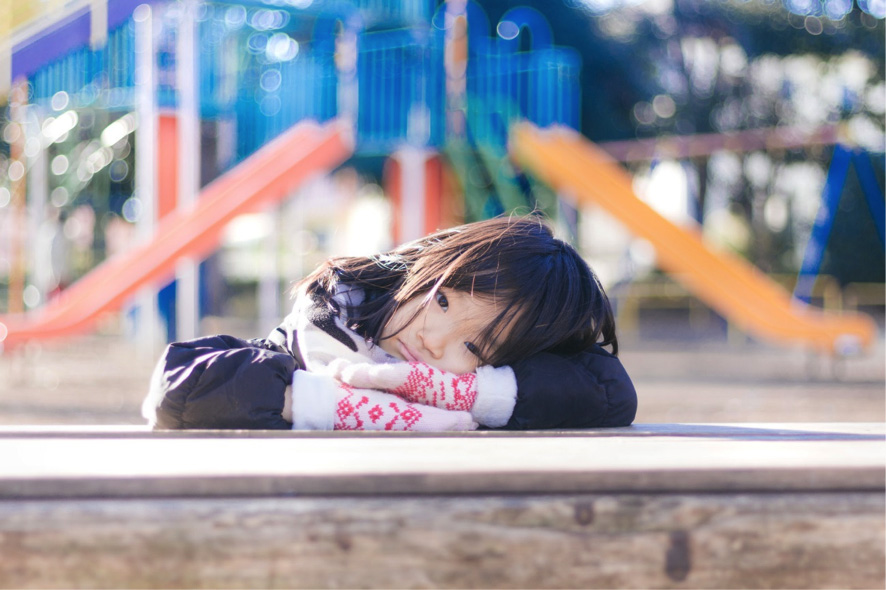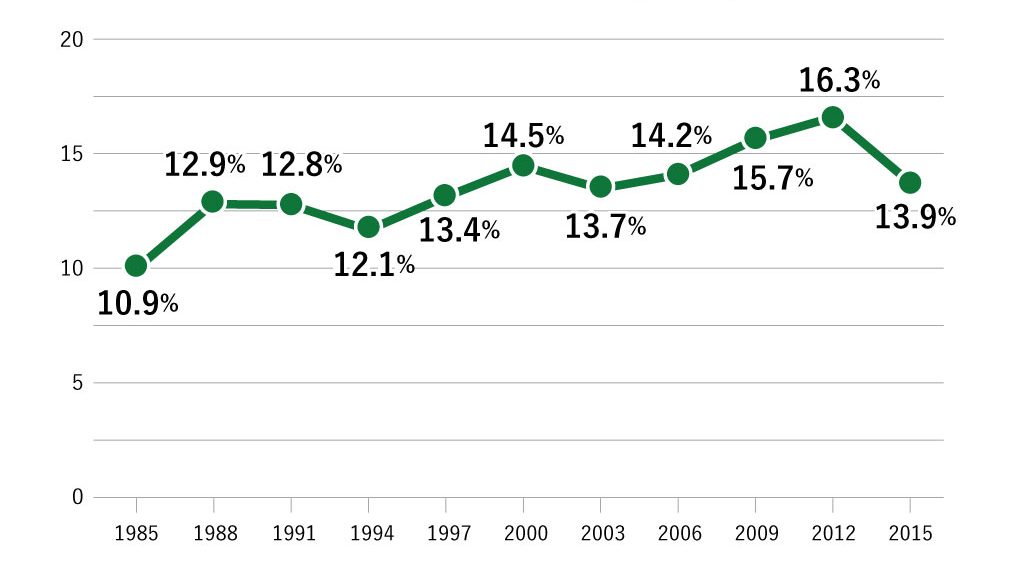Addressing Child Poverty

Current situation regarding Child Poverty
Japan’s rate of child poverty is above the OECD average. Overall, the rate has been rising since the 1980’s, and today one in seven children lives in poverty.

The child poverty rate shows the percentage of children under the age of 18 who live in relative poverty. Relative poverty is defined as having income of less than one-half the national median disposable income, which for a household of one parent and one child means a monthly income (including public assistance) of 140,000 yen or less.
Children raised in these households are at an extreme disadvantage in terms of medical care, meals, schooling, and prospects for higher education, and there is a clear trend of these children being unable to escape from poverty in the future.
Addressing the problem of child poverty is therefore an urgent issue.
The Nippon Foundation’s Research into Child Poverty
The Nippon Foundation report estimating the economic loss from child poverty
Although the problem of child poverty is an extremely important issue, there has been almost no research or writing that quantitatively analyzes the impact of child poverty on society.
To make more people realize that child poverty is not just “someone else’s problem,” but is an issue that affects everyone in Japan, The Nippon Foundation estimated, for the first time, the economic impact of leaving child poverty unaddressed.
The survey started with the assumption that economic gaps among children lead to disparities in education, which in turn result in differences in future income, and then compared the two scenarios of leaving the current situation unaddressed and implementing measures to reduce disparities in education.
In Japan, the level of education completed and whether or not a person is a regular, full-time employee are reflected in income levels, meaning that disparities in education have a major impact on lifetime earnings.
Under the improved scenario, the number of college graduates increases and more people are regular, full-time employees, and their lifetime earnings increase relative to leaving the current situation unchanged. In addition, as an individual’s income rises they also pay more taxes and social security premiums, reducing the government’s fiscal burden by that amount.
Calculating these differences as a loss to society, the economic loss of leaving child poverty unaddressed comes to approximately 2.9 trillion yen for just one school year of children, and the government’s fiscal burden increases by 1.1 trillion yen.
Loss to society from child poverty (for the one school year of today’s 15-year-old children)
| Scenario | Income | Net tax and social security burden | Persons in regular, full-time employment |
|---|---|---|---|
| Current scenario | 22.6 trillion yen | 5.9 trillion yen | 81,000 |
| Improved scenario | 25.5 trillion yen | 7.0 trillion yen | 90,000 |
| Difference | 2.9 trillion yen | 1.1 trillion yen | 9,000 |
Summary chart of The Nippon Foundation’s findings. This shows that under the improved scenario, lifetime earnings increase 2.9 trillion yen, the net tax and social security burden increases 1.1 trillion, and the number of regular, full-time employees increases by 9,000 relative to the current scenario.
These results clearly show that child poverty is a problem that has a huge impact on the Japanese economy and everyone in Japan, and also suggest that the implementation of measures to address the problem can be expected to yield a very large return.
In addition to compiling the latest research from Japan and overseas, the report outlines how the estimates were made and provides more detailed results, and also considers suggestions for society and government policy.
As a follow-up, a second report breaking down the economic loss to society by prefecture is being released.
Contact
Communications Department
The Nippon Foundation
- E-mail:cc@ps.nippon-foundation.or.jp



